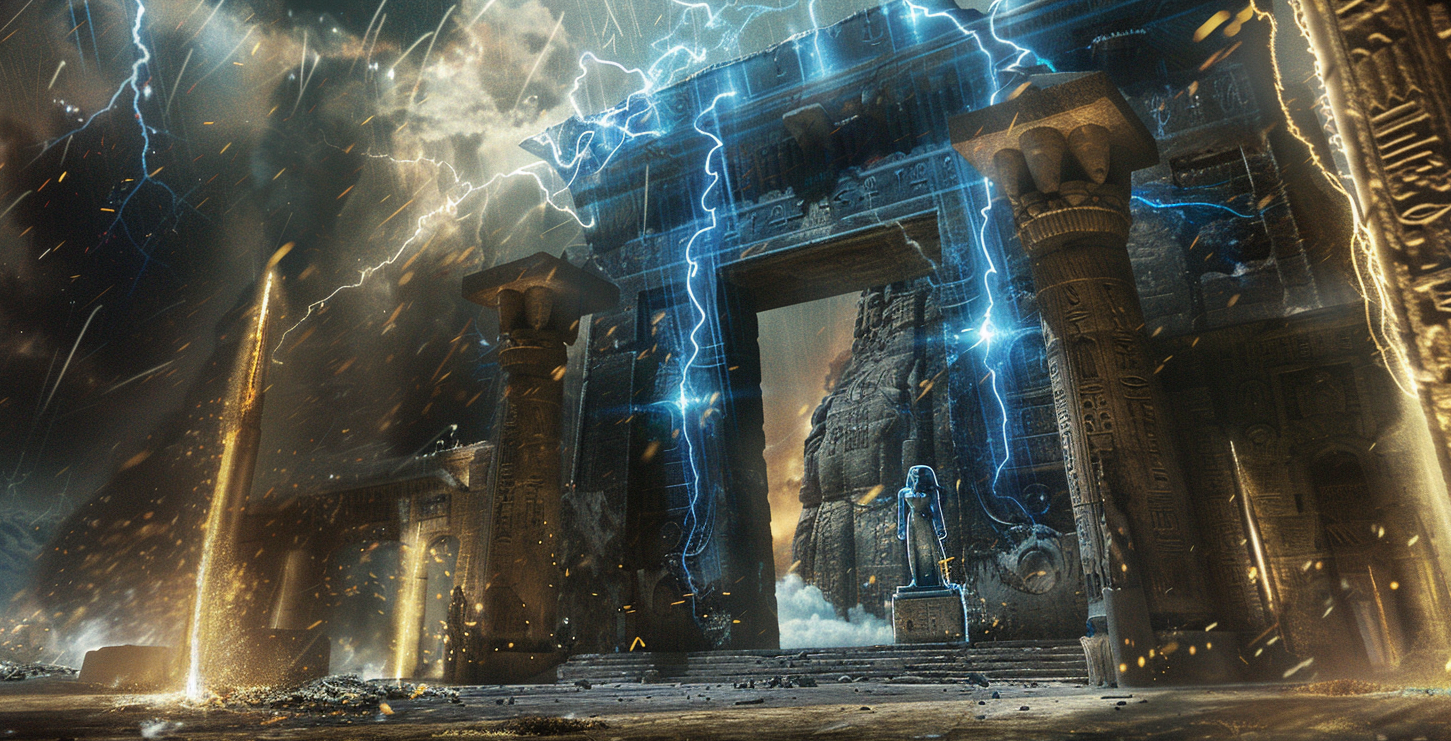In the hallowed halls of the Hathor Temple at Dendera, Egypt, lies a peculiar relief known as the Dendera Light. This intricate carving depicts what appears to be a bulb-like object connected to a power source by two serpents, sparking speculation about the use of advanced lighting technology or even electricity by the ancient Egyptians. Let’s delve into the history and symbolism of the Dendera Light and explore the various interpretations surrounding this enigmatic artifact.
The Dendera Light relief, discovered on the ceiling of the Hathor Temple in the late 19th century, has long been a subject of fascination and debate among archaeologists and Egyptologists. Carved into the sandstone ceiling, the relief portrays a central bulb surrounded by lotus blossoms, with a pair of serpents extending downward from the bulb to what appears to be a power source or electrical generator.
One interpretation of the Dendera Light relief suggests that it may represent the use of advanced lighting technology or electricity by the ancient Egyptians. Proponents of this theory point to the bulb-like object as evidence of a primitive electric lamp or torch, while the serpents are interpreted as conduits for transmitting electrical energy. This interpretation aligns with ancient Egyptian texts and artwork that depict serpents as symbols of power and energy.

Moreover, some researchers argue that the Dendera Light relief may symbolize the concept of divine illumination or enlightenment in ancient Egyptian religion. Hathor, the goddess associated with the temple, was often depicted with solar and celestial attributes, symbolizing light, wisdom, and cosmic order. Therefore, the depiction of a light source in the temple may have been intended to convey spiritual enlightenment or the divine presence of the goddess.
However, skeptics offer alternative explanations for the Dendera Light relief, cautioning against attributing too much significance to its depiction. They argue that the relief may be purely symbolic or decorative in nature, rather than representing actual technological advancements. Moreover, without clear evidence of ancient Egyptian use of electricity or advanced lighting technology, the true meaning of the relief remains speculative.
Another interpretation of the Dendera Light relief suggests that it may represent a ritualistic or ceremonial object rather than a functional lighting device. In ancient Egyptian religious rituals, symbolic objects and imagery were often used to evoke specific concepts or invoke divine blessings. Therefore, the Dendera Light relief may have been created as a representation of the eternal light of the sun or the divine radiance of the goddess Hathor, rather than a practical source of illumination.
In conclusion, the Dendera Light relief remains a captivating enigma that continues to intrigue and mystify scholars and enthusiasts alike. Whether viewed as evidence of ancient Egyptian technological prowess, symbolic representation of divine illumination, or simply artistic expression, the relief serves as a reminder of the complexities of ancient culture and the enduring quest for knowledge and understanding.

29 thoughts on “Deciphering the Mystery of the Dendera Light: Ancient Egyptian Technological Advancements”
Comments are closed.